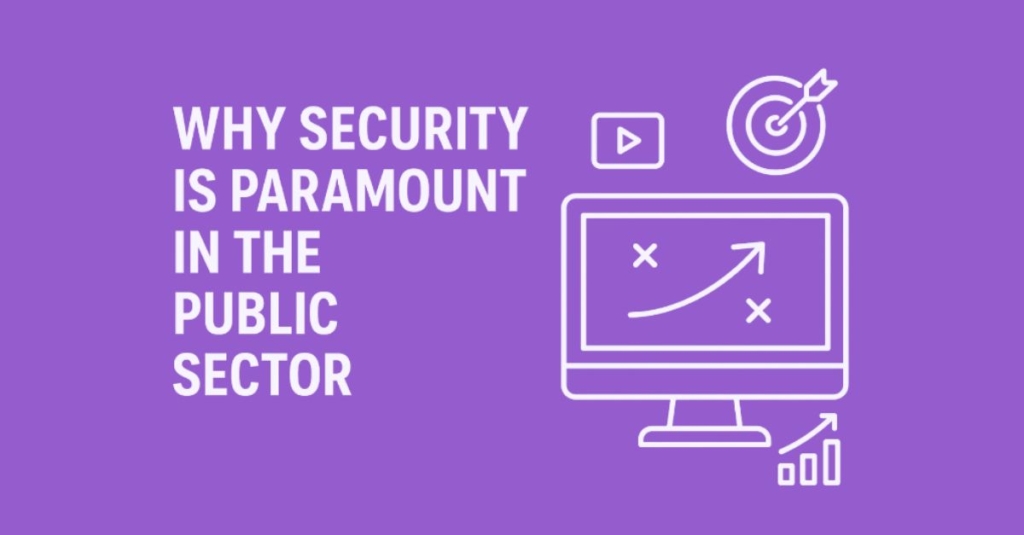The decommissioning of sharePoint workflows: What it means for Project Online
The digital landscape is constantly evolving, and with it, the tools and processes we rely on to manage our projects. One significant change on the horizon is the steady decommissioning of Project Online, beginning with the SharePoint workflows. This development will have various impacts, particularly on the Phase and Stage function, commonly known as the Stage and Gate process, and some “add-on” functionality delivered by implementation partners.
Understanding the Current Solution
Project Online is built on the SharePoint platform, leveraging its robust architecture for collaboration, document management, and integration. By using SharePoint as the foundation, Project Online enables teams to store, share, and manage project-related documents, while benefiting from features such as version control, permissions, and workflows.
As SharePoint evolves, its underlying architecture, features, and functionalities may shift, affecting how Project Online operates.
SharePoint 2013 workflow retirement – Microsoft Support
In the current setup, Project Online utilizes a project landing page with a phase and stage configuration. This configuration allows users to submit their projects to the next stage, triggering a workflow that progresses the project forward. This automated process has helped portfolio management, ensuring accurate alignment of projects to the correct stages and the appropriate governance applied at each gate.
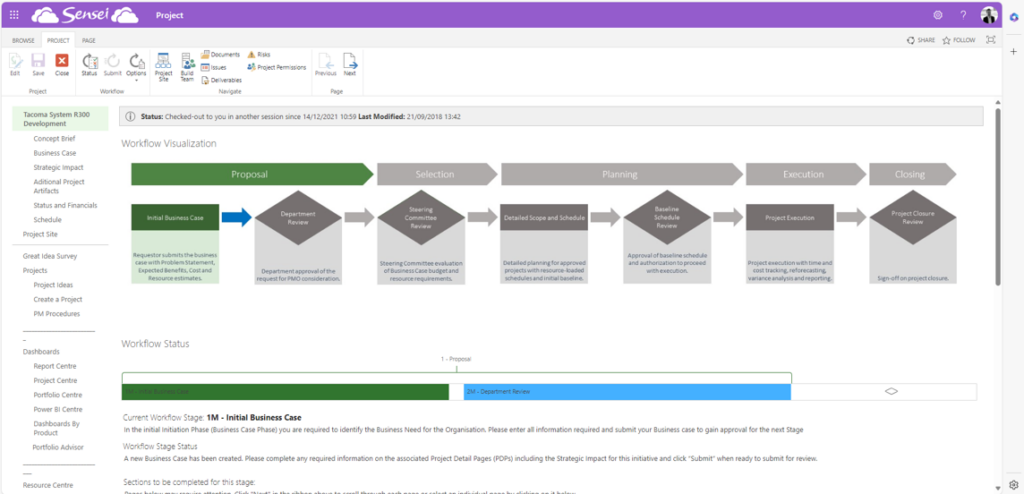
Image shows a custom-built workflow in Project Online
What’s Going to Happen?
The decommissioning of SharePoint workflows raises several questions and uncertainties:
- Unknown Switch-off Mechanism: At this point, it is unclear how the workflows will be switched off. Will the automation cease abruptly, requiring users to manually progress each step? Or will the Phase and Stage function be entirely removed?
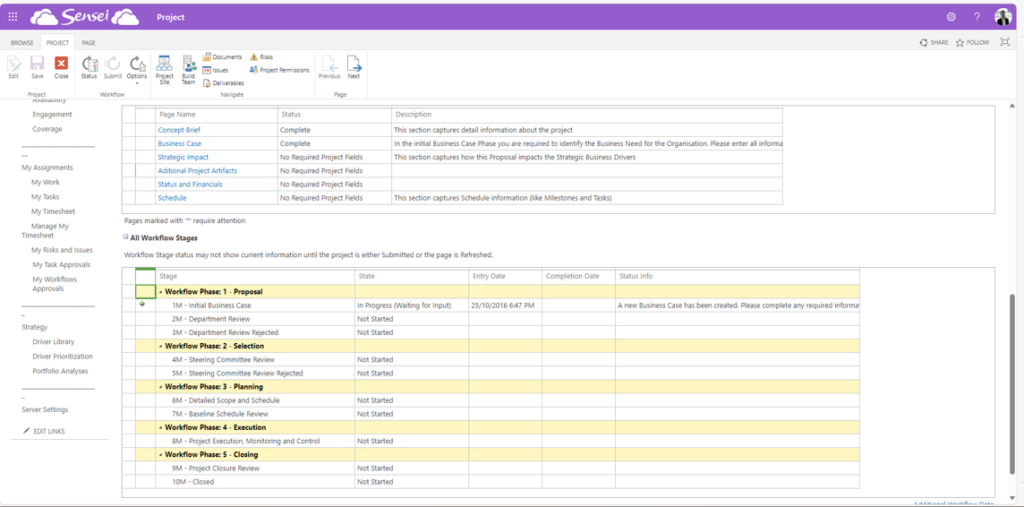
This is the standard Phase and Stage process currently available in Project Online
Don’t Use the Phase and Stage Function? No Problem (For Now)
For those who do not rely on this function, there is no immediate cause for concern. However, it is important to note that similar functionalities may also be retired in the near future.
Adapting to the Change
To maintain the automated Stage and Gate process, consider switching this functionality over to Power Automate, which is Microsoft’s recommended workflow engine moving forward. Power Automate can replicate many of the functions that SharePoint workflows currently handle, ensuring continuity in your project management processes.


Example of a Power Automate approval Flow with project details
This transition may also involve combining Power Automate with Power Platform Canvas apps to create a more intuitive front-end experience. By leveraging Canvas apps, you can enhance the visibility and tracking of your Stage and Gate process, providing users with a customised interface for better interaction and improved decision-making throughout the project lifecycle.
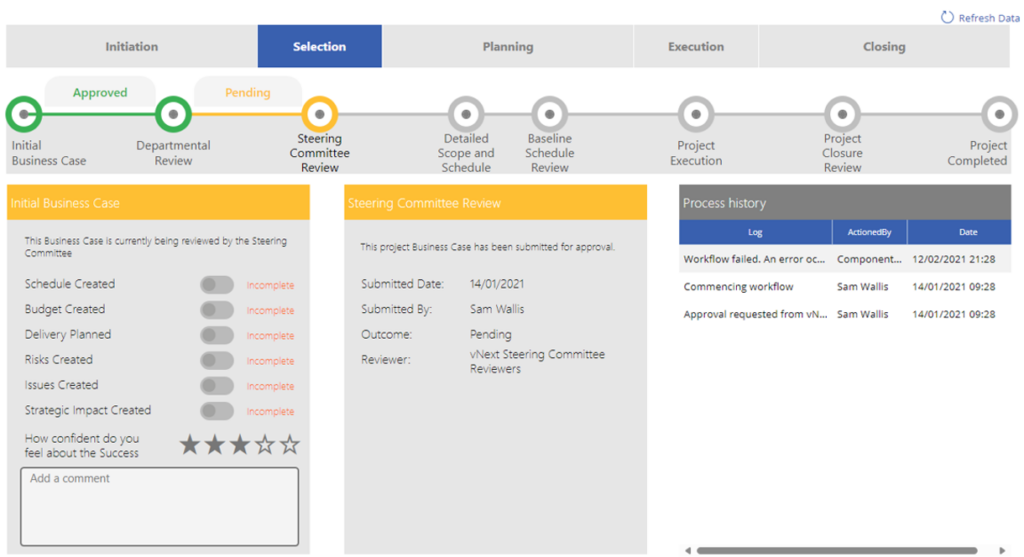
A custom developed Workflow App allowing checklists, multiple level approvals and progress tracking
Beginning the Transition
The transition from SharePoint workflows to Power Automate is not just a necessary adjustment but also an opportunity to enhance your Project and Portfolio Management (PPM) tool. By embracing this change, you can leverage the advanced capabilities of new technology, mainly the Microsoft Power Platform, to create more user friendly and advanced PPM tools.
For Sensei clients – the transition from Project Online to Altus is driven by Microsoft’s scheduled deprecation of Project Online Reporting Hub integration services in April 2026. This upgrade is essential to maintain and enhance project management systems. The transition involves moving from the current Sensei solutions for Project Online to the Altus platform, which offers a highly extensible environment, increased functionality, and opportunities to substantially improve portfolio, program, and project delivery. The upgrade process includes addressing migration challenges such as project data, workflows, resource allocations, SharePoint documents, and reporting. Altus provides significant benefits, including saving time and money, reducing risk, and increasing efficiency in project initiation and management.

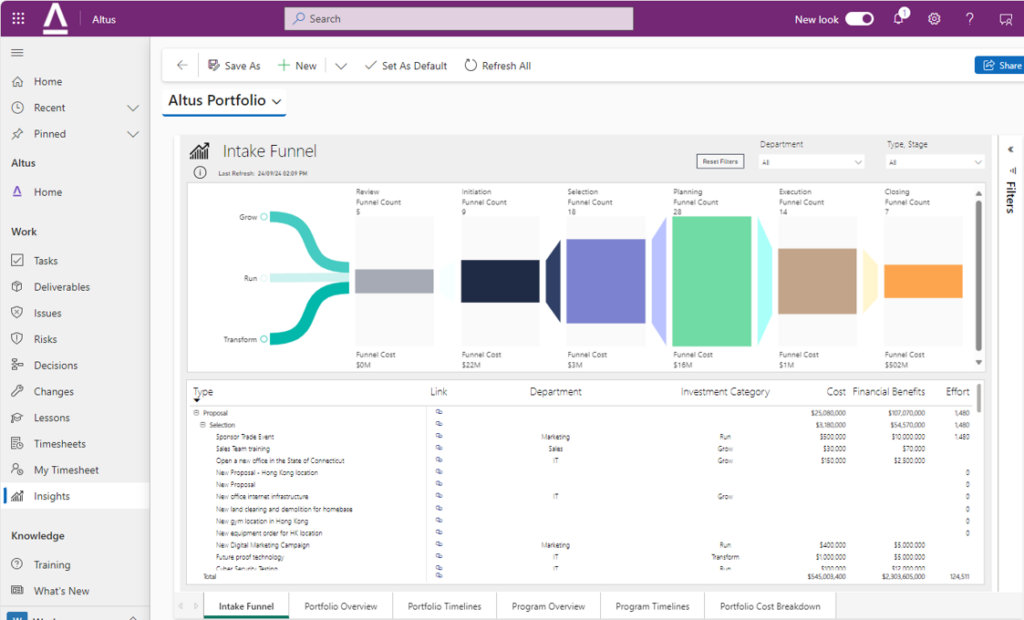
In conclusion, while the decommissioning of SharePoint workflows presents challenges, it also opens the door to new possibilities. By proactively transitioning to Power Automate or migrating to future ready solutions, you can ensure that your project management processes remain efficient and resilient in the face of change.
Stay tuned for further updates and guidance on this transition, and as always, feel free to reach out with any questions or concerns.
Please get in touch if you would like more information.




